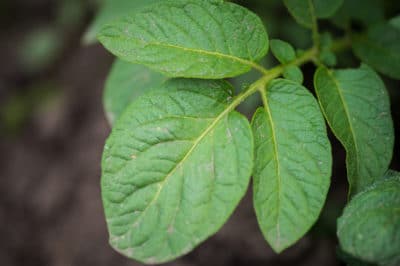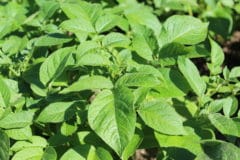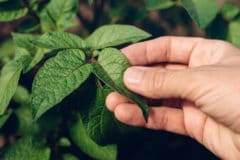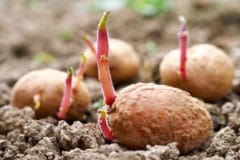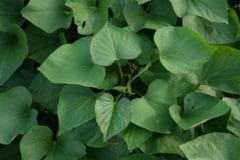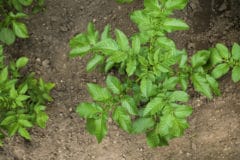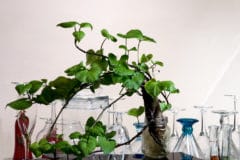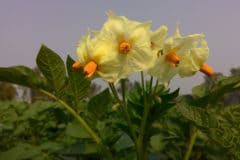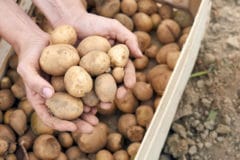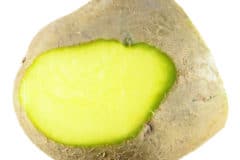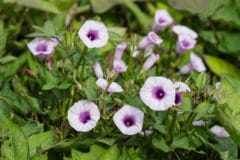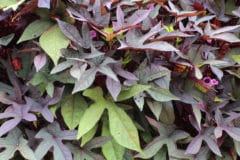Solanaceous Plants
Potatoes belong to a group of plants called nightshades. Other members of the nightshade family include tomatoes, peppers and eggplants. Closely related to tobacco, which produces the poison we call nicotine, nightshade plants produce solanine. The alkaloid is part of a potato’s chemical defense system, protecting the plants from insects, diseases and other predators.
About Solanine
Solanine is produced in potato plants when they are exposed to the sun. That’s one reason why potatoes are hilled – covered several times with soil as they grow. If the tubers are exposed to light, their solanine content can be high. Even when properly hilled, potatoes may still contain solanine. The solanine is also present in sprouting stems, fruits and leaves, in varying concentrations.
Solanine Poisoning
The symptoms of solanine poisoning vary according to the amount consumed and an individual’s sensitivity to the alkaloid. Potato leaves are likely to be quite high in solanine. Symptoms include:
- Nausea and vomiting
- Abdominal pain and diarrhea
- Drowsiness and mental confusion
- A weak and rapid pulse
- Shortness of breath
- Eventually, respiratory failure, which can cause death.
Cooking Potatoes
While the whole potato plant, including the leaves, contains solanine, potatoes that are not green are still safe to eat. Research has shown that when the tubers are boiled or fried, the solanine leaches into the water or oil. You should still trim obvious green spots from the potatoes, as they are an indication of sun exposure, which increases solanine. In any case, don’t eat the leaves, raw or cooked.
“Irish” Potatoes vs. Sweet Potatoes
It’s possible that any confusion about whether you can eat potato leaves comes from the name potato being used for two very different plants. The sweet potato is not a nightshade – it belongs to the morning glory family. The shoots, stems and leaves of the sweet potato are not only edible, they are an important food source in many tropical areas. They are usually steamed or stir-fried.
Other Interesting Leaf Facts
Although potato leaves are not edible, they have some other interesting qualities. Leaves are where the first signs of an insect infestation will occur. The Colorado potato beetle and its larvae can decimate a potato field in a couple of weeks, leaving only skeletons. Some potatoes have hairy leaves that can help repel this pest. Leaves can also indicate nutrient problems and too much or too little water.
